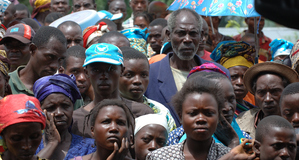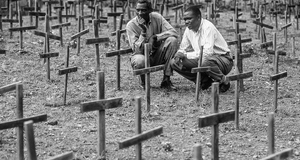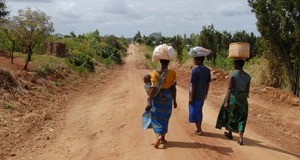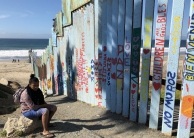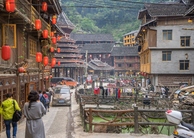Featured Article:Addressing the Use of Sexual Violence as a Strategic Weapon of War
By
2013, Vol. 5 No. 04 | pg. 1/2 | »
IN THIS ARTICLE
KEYWORDS
AbstractThis paper examines historical and contemporary instances wherein sexual violence, specifically rape, was used as a strategic weapon amid both traditional and tribal conflict, as well as in genocidal operations. It analyzes the cogency of sexual violence as a weapon by considering its physical and psychological effects on victims and the morale of targeted populations. Additionally, it scrutinizes the motivations and intentions that support the use of sexual violence during armed conflict in order to ascertain potential methods by which the incentive may be removed or mediated. The intent of this paper is to identify the use of rape in warfare as a crime against humanity. Accordingly, it presents applicable international laws that may be cited in the adjudication of rape warfare practitioners and suggests prosecution is the duty of the international community. It introduces specific examples of the effective enforcement of these laws as well as criticisms presented by victims’ advocates. Additionally, it proposes a humanitarian aid response that addresses the social damage which wartime sexual violence creates. This paper thus offers a two-pronged approach to the problem of wartime sexual violence: one of calculated judicial application and compassionate people-centered assistance. Sexual violence has been employed as a strategic weapon of war for at least as long as historians have been documenting conflicts. Indeed, members of nearly every standing army in history have participated in some form of rape warfare (Vikman, 2005). Consequently, the international community has implemented various forms of legislation to criminalize the deliberate targeting of civilians during armed conflict (Bergoffen, 2006; Haddad, 2011). Nonetheless, rape remains one of the most under-reported and inadequately prosecuted of all war crimes (Falcon, 2001). Certainly, a lack of discipline exhibited by inexperienced and non-professional warriors in conflicts can explain a fraction of these occurrences. Though, it would be disingenuous to affix such justifications upon those instances that are deliberately calculated by the professional warfighters and commanders of comparably advanced armies (Valenius, 2004). Moreover, the sheer prevalence of its use precludes the validity of the “bad apple” argument, wherein a deviant minority becomes the scapegoat which suffers for the sins of an apathetic organization (Whitmer, 2006). Indeed, sexual deprivation and base desire cannot explain why even educated military strategists would advocate the use of sexual violence in warfare. Unless, on the other hand, they regard it as an valuable weapon to strategically target the psychological well-being and social cohesion of civilian populations as well as the morale of enemy units (Clifford, 2008). In order to address the resultant social problems associated with sexual violence in conflict, it is necessary to understand the motivations and intent behind the groups that have sanctioned its use. Those who have used rape as a weapon perceive it to be an effective complimentary method by which their goals can be achieved and are drawn to its symbolic message of dominance (Baaz & Stern, 2009). Accordingly, those who wish to remedy its negative consequences and mediate future occurrences must understand why it works in the first instance (Mukamana & Brysiewicz, 2008). Most importantly, careful study of the underlying justifications for its use may reveal avenues by which these motivations can be arrested or removed (Dwyer, 2009). If such inclinations cannot be combatted, viable deterrence measures may be implemented which will raise the cost to the perpetrators of rape warfare beyond its potential benefit to their cause (Castillo, 2007). Recent landmark rulings represent small steps toward resolution via the adjudication of wartime rapists. Regardless, victims’ advocates remain largely unimpressed; many having become even more vocal in their demands for justice (Bergoffen, 2006; Hargreaves, 2001). Therefore, the need for a victim-focused humanitarian response is axiomatic. Even when copiously applied, the law alone cannot cure the social plights which disproportionately affect women and children in the wake of wartime atrocity (Ghobarah, Huth, & Russett, 2003).The History and State of Rape WarfareThe prevalence of sexual violence in warfare is well documented and permeates world history. According to Gottschall (2004), its use was illustrated in ancient texts such as Homer’s Iliad and the Old Testament of the Holy Bible (e.g. Zechariah 14:2). In the 13th Century, Genghis Khan established specific policies which encouraged the use of rape warfare as he expanded his empire. Khan infamously proclaimed that one of the greatest pleasures in life was to ravage the daughters and wives of one’s enemies (Clifford, 2008). Rape was later employed as a strategic weapon by members of both the Allied and Axis armies during World War II as a means to terrorize civilian populations and demoralize their respective enemies (Epp, 1997; Ferraro, 2008). The most atrocious example within this era was the infamous Japanese campaign which became known as the Rape of Nanking. After killing about half of the city’s approximated 600,000 residents, Japanese Imperial Army soldiers gang-raped between 20,000 and 80,000 Chinese females of various ages (Sedgwick, 2009). Therein, fathers were forced to rape their daughters and sons their mothers, generally under threat of death, while other family members watched (Zimbardo, 2007, pp.16-17). Ostensibly, this was a calculated employment of psychological warfare aimed at reducing the cohesion of family units and the community as a whole so that Japanese authority would not be resisted (MacDonald, 2005; Sedgwick, 2009). More recently, sexual violence has become a component of civil warfare in developing nations such as Afghanistan and Guatemala, as well as amid the purported 400,000 deaths associated with state-sponsored genocide in the Darfur region of Sudan (Hagan, Rymond-Richmond, & Parker, 2005). Though rape warfare has endured into the modern era, sexual violence is still perceived by many to be an inherent byproduct of war itself; influenced by such factors as the sexual deprivation of mobilized troops, a lack of military discipline, and the biological drive to produce offspring (Clifford, 2008; Thornhill & Palmer, 2000; Vandermassen, 2011). This indifference only perpetuates its use and lessens the likelihood that perpetrators will face justice for their transgressions. Moreover, such callous assertions are void of empirical evidence and cannot explain the rampant and coordinated use of sexual violence (Buss, 2009; Clifford, 2008). Rape warfare is as old as written human history, having been employed by uneducated tribesman and military tacticians alike (Clifford, 2008; Gottschall, 2004). However, advancements in military technology seem to have replaced or improved upon virtually every aspect of armed conflict, save for two of man’s baser desires; sex and violence. The Efficacy of Sexual Violence as a WeaponSexual violence is and has been a common thread in modern conflicts and genocidal operations around the world (Clifford, 2008). Two contemporary examples of the state-sponsored coordinated use of rape warfare were perpetrated against “out groups” of Bosnia-Herzegovina from 1992-95 and of Rwanda in the spring of 1994 (Haddad, 2011; Staub, 1999; Weitsman, 2008). In addition to being a psychological weapon, rape warfare was used therein with the deliberate intention of significantly diminishing particular ethnic populations. In both instances, governmental approval offered a license for sadistic innovation against the targeted populations (Jamieson, 1999). Such was the nature of its employment during a tribal conflict between the Hutu and Tutsi communities of Rwanda. Amid an estimated 800,000 to 1 million deaths, roughly three-quarters of the entire Tutsi population was eradicated (Leitenberg, 1994; Mukamana & Brysiewicz, 2008). This state-sponsored genocide operation armed the Hutu populations and encouraged them to use rape as a tactic of terror and spiritual annihilation. One Hutu leader, Mayor Silvester Cacumbibi, is rumored to have told one of his victims “We won’t waste bullets on you; we will rape you and that will be worse for you” (Zimbardo, 2007, p. 13). One of the largest mass rape-murders of a Tutsi population during this conflict was orchestrated by Pauline Nyiramasuhuko, a former social worker, minister, and lecturer on female empowerment who was herself a Tutsi (Hogg, 2010). Therein, Nyiramasuhuko created a ruse wherein she convinced the Tutsi people within the village of Butare to gather for a humanitarian aid drop, whereupon they were cut down by automatic weapons, grenades, and machetes. She ordered the Hutu aggressors to rape all of the women before killing them (Durkham & O’Byrne, 2010; Zimbardo, 2007, p. 13). When the men became fatigued, she provided gasoline from her own vehicle so that the remaining women could be burned to death. One young Tutsi woman, Rose, was raped by Nyiramasuhuko’s son who had received “permission” from his mother. After being forced to watch the rape of her own mother and the murders of several of her relatives, Rose was allowed to live so that she could “deliver a progress report” as a witness to the massacre (Zimbardo, 2007, p. 13). Incidents such as this were not uncommon during the Rwandan tribal conflict. Researchers estimate that approximately 350,000 Tutsi females were raped within this three-month period (Bijleveld, Morssinkhof, & Smeulers, 2009). Military strategists may regard this activity as a waste of valuable resources and manpower. Moreover, troops would be potentially exposing themselves to venereal diseases while commanders run the risk of losing control of their men, making their units combat ineffective (Donovan, 2002; Meini, 2008). However, the Hutu leaders and sponsoring government understood the power of the message. To them, it was not counter-productive to kill women immediately after they were raped, so long as a select few lived to tell the story; women like Rose. Therefore, rape warfare exemplifies intimidation in its most malevolent form (Parfitt, 2004). The efficacy of rape warfare has been substantiated through its implementation as a weapon by which warring factions have facilitated their goals (Clifford, 2008). However, the same could be said of concentration camps and the mass exterminations organized by the Nazi Party during the Second World War. One notable difference therein is that many of the perpetrators of the Holocaust were adjudicated at the Nuremberg Trials (Hoffman, 1999). Contrarily, those who have sanctioned and committed rape warfare have historically evaded justice (Falcon, 2001). For example, following a 36-year civil war in Guatemala, rape victims and their families maintained that absolute blame rested upon the state-sponsored soldiers who had perpetuated the barbarity. Nonetheless, they believed that their only available recourse was through legitimate state agents, whose power rivaled or superseded that of the offenders. Paradoxically, their demands for justice could only be heard by members of the same government that had initially mobilized the soldier-rapists (Hastings, 2002; Ross, 2004). Similarly, sexual violence amid armed conflict in the Democratic Republic of the Congo has been labeled by the United Nations (UN) as a strategic weapon of war and a gross violation of human rights. Regardless, and in spite of the Goma peace agreement, the atrocities persisted unabated. Both state and non-state armed groups have been identified as perpetrators of rape warfare by the UN and declared to be in violation of various international laws, to include the Nuremberg Code. Nonetheless, the study of mass rape during armed conflict is largely done retrospectively, with significant intervention rarely taking place (Maedl, 2011). These contemporary examples demonstrate that the perpetrators of rape warfare are largely immune from judicial proceedings. Indeed, even when an international body as powerful as the UN condemns their actions, offenders can be reasonably certain that they will never answer for their transgressions, which only buttresses their perceived entitlement to the “spoils” of war (Falcon, 2001; Mukamana & Brysiewicz, 2008). In the absence of cogent deterrence measures, rape warfare has become an omnipresent consequence of armed conflict (Clifford, 2008). Injustice and UnderreportingAmong many populations, rape is the most underreported of all violent crimes, even during peacetime (Clay-Warner & McMahon-Howard, 2009; Falcon, 2001). Many rapes are not reported due to the victims’ lack of understanding of what legally constitutes a sexual assault. Therein, ignorance of the law breeds trepidation. Moreover, survivors often perceive that they will be somehow further victimized by law enforcement personnel or the judicial system (Clay-Warner & McMahon-Howard, 2009). This preconception has been reinforced by numerous historical examples and will require significant action to remedy. Additionally, victims often feel embarrassed and wish to keep the incidents private as they question their own culpability (Clay-Warner & McMahon-Howard, 2009; S. Holmes & R. Holmes, 2009, pp. 218-219). In roughly 10 percent of cases, this embarrassment eventually manifests as shame, largely due to fear of public scrutiny and cultural ideologies which tend to at least partially blame the victim for the assault (Weiss, 2010). Victims must first understand that they have suffered from a crime that is punishable by law and that the perpetrators bear the full burden of guilt. More importantly, they must have access to justice (Allen, 2007). Ergo, an effective counter strategy must incorporate the application of human-rights law and humanitarian advocacy.Continued on Next Page » Suggested Reading from Inquiries Journal
Inquiries Journal provides undergraduate and graduate students around the world a platform for the wide dissemination of academic work over a range of core disciplines. Representing the work of students from hundreds of institutions around the globe, Inquiries Journal's large database of academic articles is completely free. Learn more | Blog | Submit Latest in Law & Justice |







